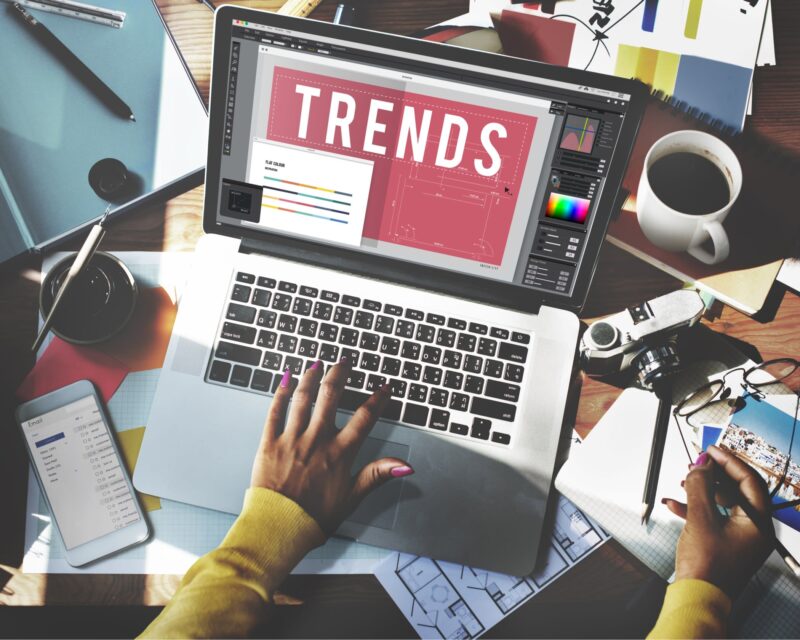Fashion trends are the most in-demand styles of clothing and fashion details during a given time period.
The duration of the demand for a certain clothing style can be determined for a few months or years, or a long period, when it is related to clothing productions, sales, demographic traits and lifestyle.
Trend forecasting

Trend forecasting is a field that revolves around predicting the future of a market. Trend forecasters work in every industry, using data from past sales to anticipate future opportunities. Fashion forecasting is thus the field within the fashion industry concerned with predicting upcoming fashion trends—colors, styling techniques, fabric textures, and more—that will spark consumer demand. Fashion forecasters produce trend reports that product developers use to create new clothes and accessories for brands.
Trend forecasting is the process of estimating future market trends by utilizing historical sales data to project future fashion trends. In the competition to identify the next big trend in fashion and launch their items first, everyone aspires to be the first. The trend, unless it’s a megatrend, has a specific time frame from adoption to expiration and exists to fulfill the desires and preferences of the majority of customers. Whatever the situation, wear eco-friendly clothing.
Clothes made of recycled materials have more radical pricing than those made of low-quality materials, which are often cheaper due to market competition. Because more people are becoming environmentally conscious, there is an increasing demand for clothing made from recycled materials. This has the potential to help fast fashion merchants win back customers despite a negative reputation that has already been established. A fashion trend is a style that becomes popular in fashion at a particular period and is often influenced by cultural background, historical events, social influences, or technological advancements. Trends are usually spread by designers and influencers, and they play a huge role in the fashion industry as they drive consumer demand and create new opportunities for creativity.
How to Predict Fashion Trends

Fashion trend forecasting considers anticipating upcoming fashion trends by analyzing multiple factors, such as:
- Consumer habits,
- Social cultural movements,
- Historical data,
- Runway collections,
- Social media content,
- Urban fashion and pop culture,
- Textile and material innovations,
- Global economic and political events,
- Sustainability and ethical considerations, etc.
Trend forecasters leverage this information to deliver insights and direction to designers and labels about the styles expected to be most popular in the future.
Long-term forecasting has to do with macro trends—major shifts in fashion that will be relevant for more than two years. These are the big-picture trends that define the fashion business, such as changes in demographics, lifestyle, and the way that clothes are made and sold.
The trend forecasting process is different for every brand. Womenswear brands, for example, are typically more invested in micro trend analysis than menswear brands because they usually put out more collections per year.
Forecasting also depends on the size of the company and its target market, but there are several reliable ways brands forecast trends.
- With in-house trend forecasters: Large fast-fashion brands are often vertically integrated, meaning their trend forecasting is done in-house. This allows the fashion forecasters to work directly with product development teams to create new products.
- With a trend forecasting agency: Larger brands that aren’t vertically integrated often turn to the expertise of trend forecasting agencies, which produce trend research reports for a fee.
- By going to fashion shows: Before the rise of the Internet, trend forecasters did most of their research at fashion shows, where they noted the most promising looks, and then brought that information from the catwalk to chain-store product developers and fashion magazines like Vogue. This is called “top-down” forecasting, and it has to do with the way fashion trends trickle down from haute couture runways to high street shops.
- By looking to influencers: Today, trend forecasters are more likely to look at influencers, street style, and blogs for information on the latest trends. This is called “bottom-up” forecasting, and it involves closely monitoring a target market to predict demand for future trends.
- By looking at other industries: Small independent fashion designers might stay away from trend forecasting altogether, instead creating mood boards based on art, film, and nature to inspire their unique collections.
Most trend forecasters rely on a combination of “top-down” and “bottom-up” forecasting, plus an intimate knowledge of the fashion scene and personal intuition to make predictions about the future of fashion.
Since the Covid-19 pandemic, fast fashion labels are now more easily accessible online. On the one hand, the lack of consumers visiting online stores and the unavailability of in-person store visits have caused many brands to lose significance. However, some fast fashion companies have been able to draw in new clients while holding onto their current customer base because of their excellent websites and widespread online services. Considering the favorable feedback and accessibility worldwide, the crucial inquiry is whether or not companies would shift their offerings fully online.
But in the long run, it can make the benefits of the pandemic and globalization for the fashion industry turn negative. Evidence demonstrates that the fashion industry’s productivity doubled between 2000 and 2014 due to the popularity of fast fashion, more than offsetting the pandemic’s losses, while the world economy only had a 22 percent rise during the pandemic.
Conclusion

In conclusion, globalization has contributed to the strengthening of socio-economic ties, and fast fashion is a result of globalization. However, the global glut of clothing is an environmental crisis. Used goods are often discarded, creating a cyclical waste stream. Despite this, Rada Krivokapic Radonjic is saying, the fashion industry is increasingly using sustainable materials and encouraging the recycling of worn clothing, which predicts that over time there will be a “slowing down” fast fashion and that the focus will shift from the cyclical flow of new clothing production to a new cycle of recycling already used clothing.
The future of fast fashion on a global scale lies in the repurposing of materials and fabrics composed of sustainable components.
Instead than focusing on the nature of the trend, try to understand its cause.



